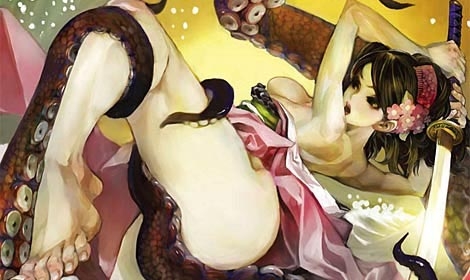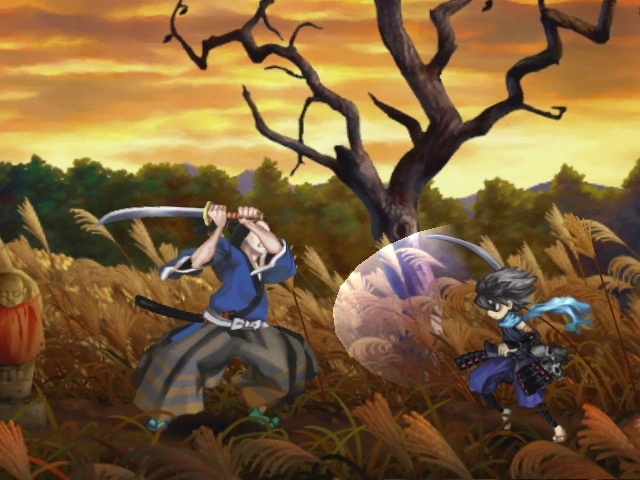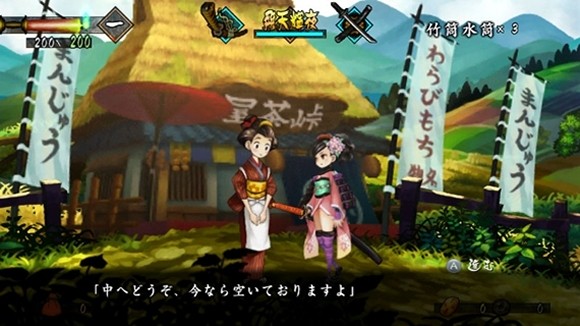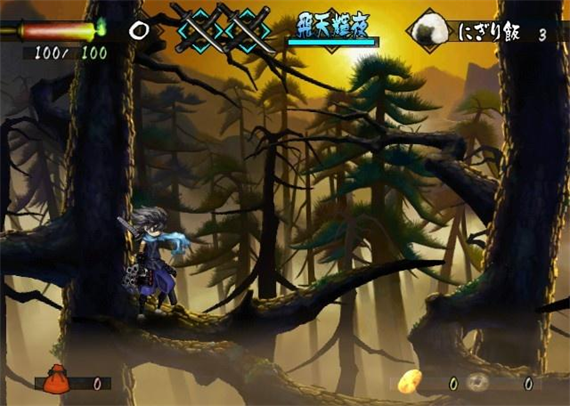While the Wii may not be the best console for hardcore gamers, it does occasionally have a few surprises here and there. Vanillaware's Muramasa: The Demon Blade is one such surprise. Muramasa is one of the most visually appealing and artistic games and a perfect example of art in entertainment. I had to dust off my Wii just for this game, which is a testament to the lack of hardcore games on the system. Will Muramasa be enough to make the Wii worthwhile for hardcore gamers?
Gameplay:
Muramasa is a simple and unique side scroller that follows the traditional gameplay aspects of Metroid and Castlevania: Symphony of the Night. There are many places to run through and explore. Players will travel through various environments, from tree tops to the roof tops of feudal Japan. Like Metroid, there is a lot of backtracking to achieve certain requirements. At points throughout the game, barriers are erected preventing players from advancing the game. Only certain Demon Blades can destroy them, and can sometimes only be acquired by defeating bosses.
There are two difficulty modes: Muso, which allows players to "cut through enemies easily and progress steadily" without being skilled at action games. This mode is meant for new players, who may have a difficult time adapting to Muramasa. When playing with the "Shura" setting, players "must evade, defend, and use Secret Arts masterfully." According to Muramasa, this mode is "only for the brave." This mode can be fairly difficult because it requires some strategic planning, rather than simple button mashing. Note, players can change between these modes at any given time during the game in the options menu.
Once you start a new game, you can select between two characters: Kisuke, a young ninja, and Momohime, a young princess of Narukami who has been possessed by an evil spirit. Kisuke starts his adventure in the west, Edo, and Momohime starts in the east, Kyo. The characters eventually will meet in the middle. After character selection, you can choose to either do a tutorial (recommended) or simply proceed on your adventure.
Kisuke, cutting through a samurai
Combat is fairly straightforward and the controls are simple. The A button performs various attacks and depending on the direction the analog stick is in, characters will perform various combos. The B trigger is used to perform the Demon Blade's special attack. There are 108 Demon Blades to collect or forge throughout the game; of those Demon Blades, up to three may be equipped at any given time, offering a wide combination of ways to slay enemies. While it is fairly easy to cut down grunts in Muso, the same enemies in Shura are tremendously more difficult. The AI will block more frequently and look for openings, keeping players on their toes. Players can collect their victims' souls which are used for filling up the Demon Blade's soul gauges and to repair broken swords. Combat and blocking will eventually deplete the weapon's soul gauge, especially if the player constantly uses special attacks or block. Once the soul gauge fully depletes, the sword will break. Players must select any of the other two Demon Blades equipped using the C button which will also perform a nifty quick slash animation to all enemies on screen.
Momohime, getting some food
Presentation:
This game is gorgeous. While the Wii wasn't designed to be a graphical powerhouse, this game surpasses most games on other consoles with its unique hand drawn art. The art style gives the game a pseudo 3D look, panning out inward with various layers, like in an animation. While running through the Trees of Edo forest, players can almost feel themselves speeding through each tree. The game is very colorful and truly showcases the beauty of feudal Japan. There are tree tops, caves, rice fields, wheat fields, cherry blossom forest, and many more environments giving a unique atmosphere that keeps the game feeling fresh throughout.
The game's menus are fairly easy to understand. It includes item, equipment, abilities, and cooking options. As players traverse through the game, they will pick up various ingredients to cook with. For example, a rice bag is a primary ingredient for onigiri, a Japanese rice ball, that can be stored and used later on. Food can restore your health, spirit, and hunger meter. The type of food will determine how much the meters are filled up. This adds an interesting element to an already excellent action game.
Forget Naruto, Kiskue is way cooler!
Final Thoughts:
Muramasa is a deep and fun game to play. The game takes around 20 hours to complete, not including time spent on extras like collecting all 108 Demon Blades and optional bosses. Games like this don't around come very often. Muramasa can be on par with classic titles like Symphony of the Night. It is also great that the game kept the original Japanese voice actors, which also contributes to the feudal Japan atmosphere. While the game essentially uses only two action buttons for attacks, it is still very satisfying to play and there are many epic boss battles. Muramasa is a must have for any Wii owner, and it would be a shame for anyone to pass it up.
5 Demon Blades out of 5




